Non Sticky Sabudana Khichdi
Note: This post contains affiliate links. As an Amazon Associate I earn from qualifying purchases.
This step-by-step recipe will show you how to make sabudana khichdi that looks as great as it tastes. No more clumpy or sticky mess!
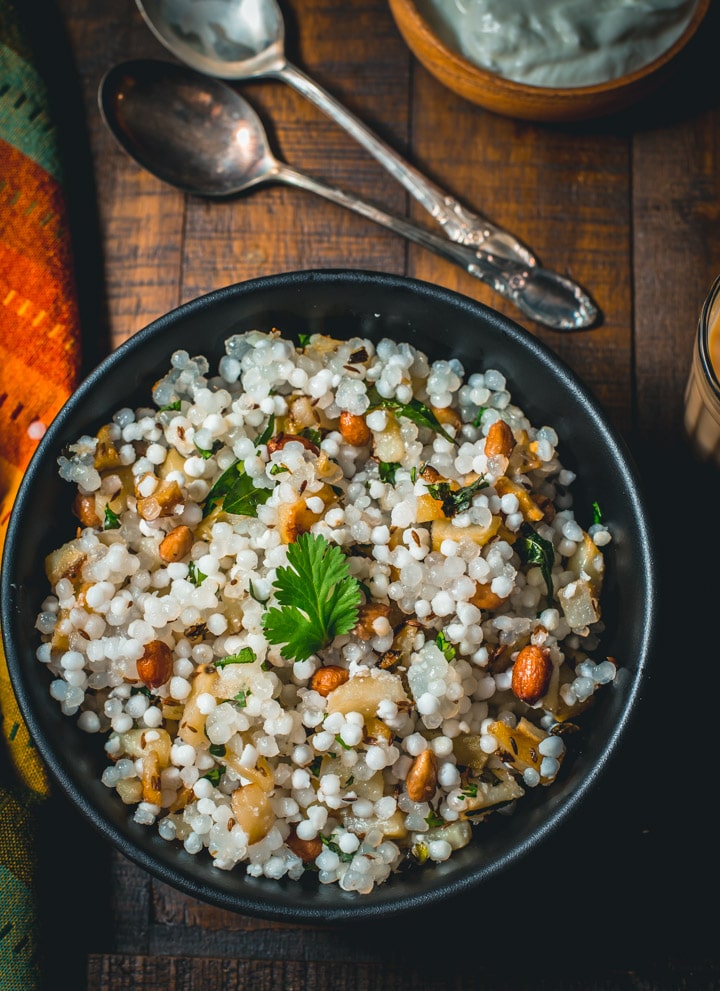
For those who have made sabudana khichdi before, you probably know that the trickiest part of making this dish is to prevent the sabudana from getting clumped together. After several failed attempts, I resorted to asking for advice from the pro cooks in my family. Their tips and tricks worked, and I finally nailed down this dish.
Here’s the recipe for sabudana khichdi from my family to yours.
And for those who are new to this dish, read the next few paragraphs to understand how sabudana is made and what makes it so popular during religious fasting.
What is sabudana?
There are two types of sabudana, one made from sago palm and the other one made from the root of the tapioca plant. The one made from tapioca is what’s popularly found in India.
To make sabudana, the starch from the tapioca root is extracted and processed to create spherical tiny balls, which are then dried. These tiny balls are called tapioca pearls or sabudana.
Sabudana is known by many other names across the world. The most common name is Sago. It is called Mutiara in some parts of south-east Asia and across India; the name varies depending on the region. For instance, it is called shaabakki in Kannada, Javvarisi in Tamil, and Saggubiyam in Telugu.
Why is sabudana so popular while fasting?
Indians use sabudana to make a variety of desserts and snacks, such as kheer, vadas, and khichdi. While most of us do have these dishes on a regular basis, they are extremely popular during religious fasting. For someone who has never fasted, it always intrigued me as to why sabudana was the preferred ingredient in fasting meals. So I decided to research, and here’s what I found out.
- Sabudana is energy-rich food. It is loaded with carbohydrates and acts as an instant energy booster.
- It is also light on the stomach and easy to digest.
- Another reason is that it is grain-free, which makes it ideal for fasting during Navratri.
How to make sabudana khichdi
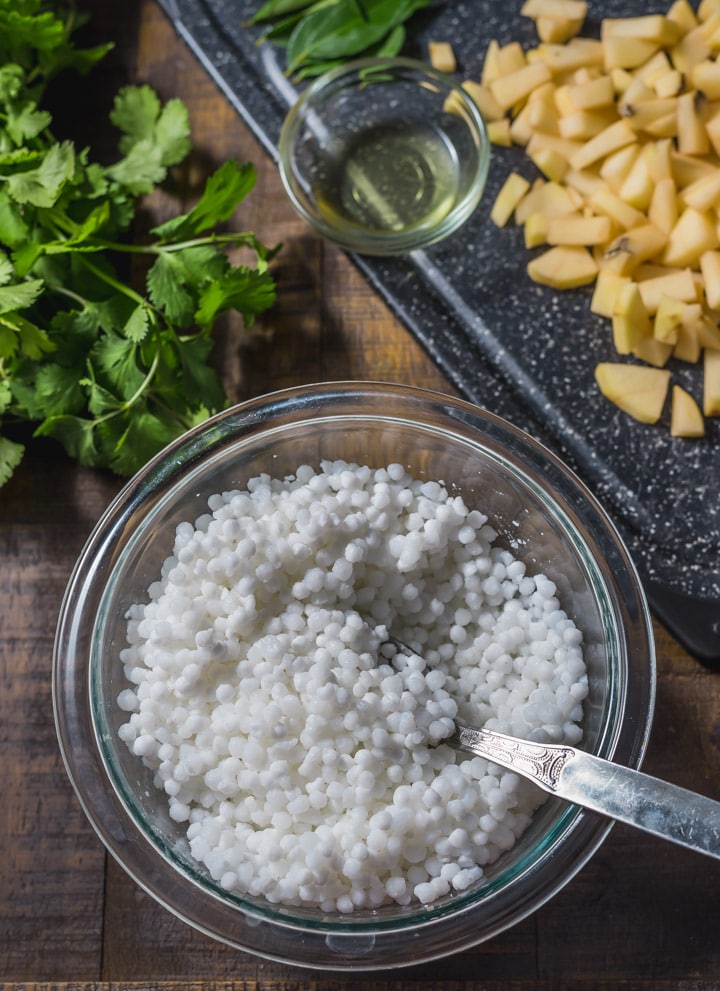
Sabudana khichdi is a healthy, vegan, and gluten-free alternative for breakfast and even lunch. It is high in starch content but very nutritious as it contains a healthy amount of proteins, calcium, iron, and vitamin K, and vitamin C.
Steps to make sabudana khichdi
- Rinse the sabudana using a strainer until the water runs clear. This helps get rid of the starch, which is what makes sabudana clumpy.
- Soak the sabudana for at least 4 – 6 hours. You need just enough water to submerge the sabudana. Use about 3/4 cup of water for every 1 cup of sabudana.
- The soaked sabudana should be soft and crumbly when you press it. Also, all the water should have been absorbed. Leave it for a few more hours if it is not soft enough.
- Add oil to a hot wok or non-stick kadhai kept over medium heat. When the oil heats up, add cumin seeds.
- Once the cumin seeds start sizzling, add curry leaves, and chopped green chilies. Let them fry for about 15-20 seconds.
- Add the potatoes and salt. Mix well.
- Lower the heat to medium-low. Cover and cook the potatoes for about 10 minutes. Stir once during the cooking process.
- Carefully remove the lid while making sure the water droplets from the lid don’t fall into the wok.
- Add peanuts to the potato mixture and fry them for about 2 minutes till they are crispy.
- Add sabudana and fold it in. Allow it to cook for about 2 minutes, stirring not more than once or twice.
- Switch off the heat once most of the sabudana or tapioca pearls turn translucent.
- Garnish with cilantro and serve it with a bowl of sweetened yogurt.
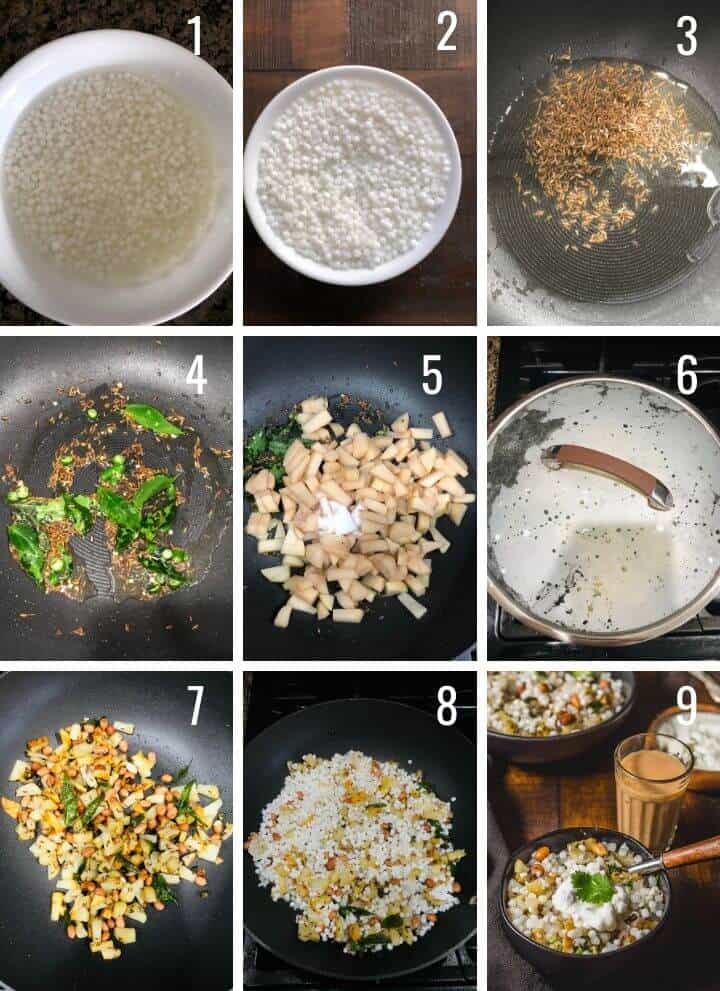
Variations
- You can temper it with ghee instead of oil.
- You can use crushed roasted peanuts instead of the whole peanuts. The peanuts or ground nuts with skin are more nutritious – that’s why I prefer them. If using crushed roasted peanuts, add them along with the sabudana.
- Add a pinch of turmeric to give this khichdi a yellowish hue.
- Garnish with grated coconut.
- The style of cooking I followed in this recipe is Maharashtrian, and that’s why you’ll see curry leaves in this recipe – feel free to skip it.
Serving suggestions
You can serve it as is or savor it with sweetened yogurt.
Tips to make non-sticky Sabudana Khichadi
- Don’t forget to rinse the sabudana until the water runs clear.
- To add a unique flavor to the dish, use leftover whey from making shrikhand or Greek yogurt to soak it.
- While adding potatoes, cut them into small cubes so they cook quickly.
- Cover the potatoes while they are cooking to fasten the cooking process. Water makes sabudana clumpy, so while removing the lid, make sure that the water droplets from the lid do not fall into the pan.
- While cooking, avoid over-stirring, as it can alter the texture of the sabudana, making it clumpy.
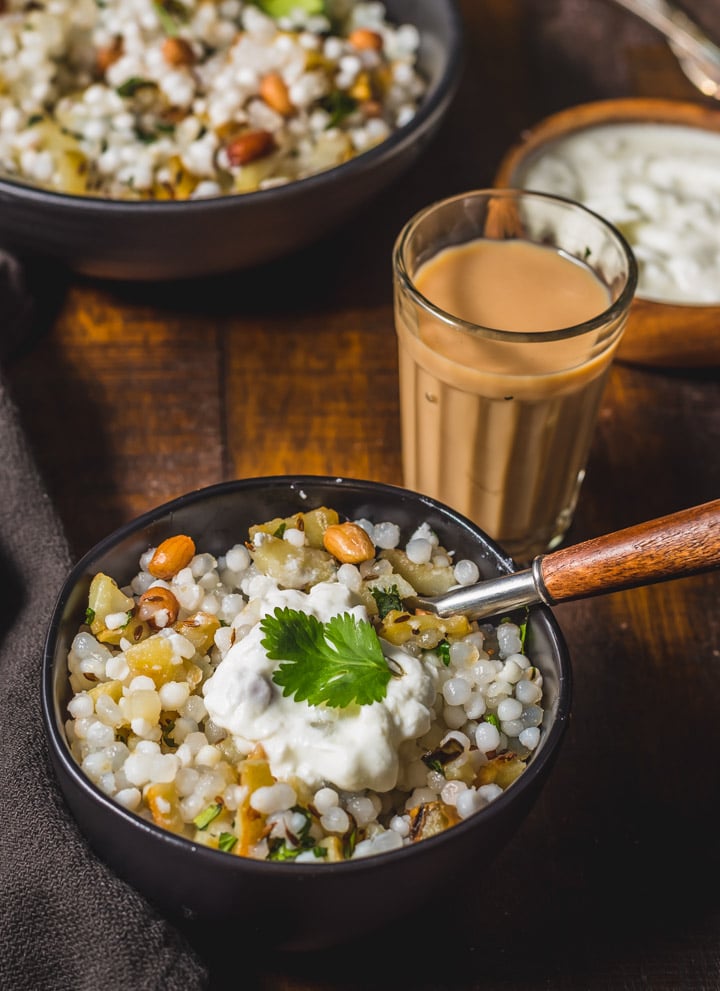
If you are looking for easy and delicious breakfast recipes, here are my top picks,
- Buttermilk dosa – Buttermilk dosa – Delicious and soft, this dosa is perfect for breakfast, snacks, and even lunch. Learn how to make it in a few easy steps.
- Instant Rava idli – Here is a quick recipe to enjoy those lovely soft fluffy instant rava idlis whenever the mood strikes. Serve with coconut or peanut chutney for a delicious and healthy meal.
- Nylon khaman dhokla – Spongy, savory, and with a hint of sweetness, Gujarati nylon khaman dhokla is a light and healthy anytime snack. Get this failproof recipe to make it in the Instant Pot.
- Lemon vermicelli – This delicious and tangy Semiya Upma (Lemon Vermicelli) is just what you need to start your day. It is filling and comes together in 15 minutes from start to finish.
- Upma (Uppumavu) – a semolina-based breakfast dish that takes less than 30 minutes.
- Idli – You’ll love this post if you have been struggling to get soft and spongy idlis. Learn all my tips and tricks to get perfect fermented batter even in winter!
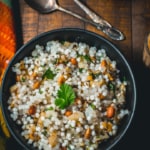
Non-Sticky Sabudana Khichdi
Ingredients
- 1 cup sabudana
- ¾ cup water
- 1 teaspoon cumin seeds
- 2 tablespoons oil peanut or avocado
- 7-8 curry leaves
- 2 green chilies finely chopped
- 1-2 medium-sized potatoes ~1.5 cups chopped
- ½ cup peanuts/groundnuts
- 1 teaspoon salt
- ¼ cup finely chopped cilantro/coriander leaves for garnishing
Instructions
- Rinse the sabudana using a strainer until the water runs clear. Doing this helps get rid of the starch which is what makes sabudana clumpy. Don't skip it!
- Soak the sabudana in water for at least 4 – 6 hours. You need just enough water to cover the sabudana completely. Use about 3/4 cup water for every 1 cup of sabudana.
- After the soaking period is over, the sabudana should be soft and crumbly when you press it. If it is not soft enough leave it for a few more hours.
- Also, all the water should have been absorbed. If the sabudana hasn't absorbed all the water, drain the excess water.
- In a hot wok or non-stick kadhai kept over medium heat, add oil. When the oil heats up, add cumin seeds.
- Once the cumin seeds start sizzling, add curry leaves, and chopped green chilies. Let them fry for about 15-20 seconds.
- Add the potatoes and salt. Mix well. Lower the heat to medium-low. Cover and cook the potatoes for about 10 minutes. Stir once during the cooking process.
- Carefully remove the lid while making sure the water droplets from the lid don’t fall in the wok.
- Add peanuts to the potato mixture and fry them for about 2 minutes.
- Add sabudana and fold it in. Allow it cook for about 2 minutes stirring not more than once or twice.
- Once most of the sabudana or tapioca pearls turn translucent switch off the heat.
- Garnish with cilantro and serve it with a bowl of sweetened yogurt.
Notes
- You can temper with ghee instead of oil.
- You can use crushed roasted peanuts instead of the whole peanuts. The peanuts or ground nuts with skin are more nutritious – that’s why I prefer them. If using crushed roasted peanuts, add them along with the sabudana.
- Add a pinch of turmeric to give this khichdi a yellowish hue.
- Garnish with grated coconut.
- The style of cooking I followed in this recipe is Maharashtrian and that’s why you’ll see curry leaves in this recipe – feel free to skip it.
- You can serve it as is or savor it with sweetened yogurt.
- Don’t forget to rinse the sabudana until the water runs clear.
- To add a unique flavor to the dish, use leftover whey from making shrikhand or Greek yogurt to soak it.
- While adding potatoes, cut them into small cubes so they cook quickly.
- Cover the potatoes while they are cooking to fasten the cooking process. Water makes sabudana clumpy so while removing the lid make sure that the water droplets from the lid do not fall in the pan.
- While cooking, avoid over-stirring as it can alter the texture of the sabudana making it clumpy.
Disclaimer: Approximate nutritional information is provided as a courtesy and can vary depending on the exact ingredients/brands used. If you have health issues, please work with a registered dietician or nutritionist.




